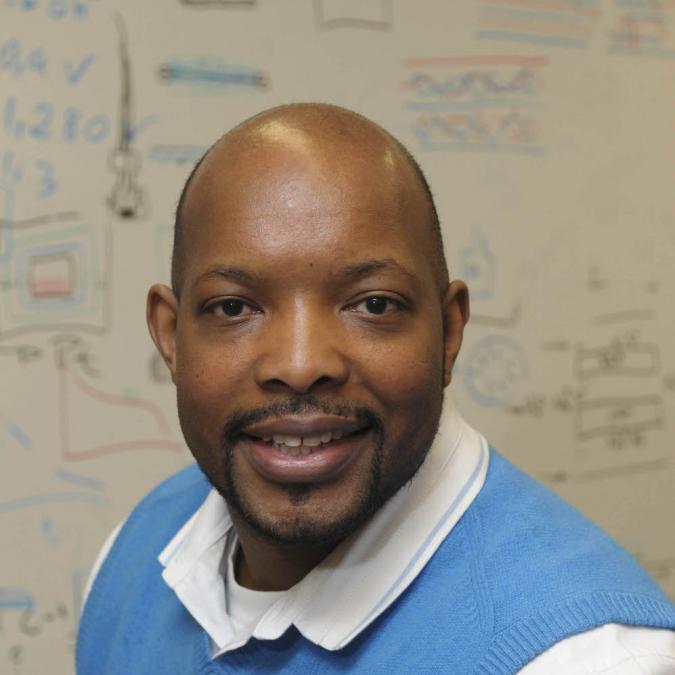Professor André D. Taylor Nano Research on Perovskite Solar Cells Named Editor’s Choice
Nanoscale Chooses Work in Field Holding Promise for Advanced Photovoltaic Cells
Nanoscale, published by The Royal Society of Chemistry, recently selected solar cell research co-authored by NYU Tandon Associate Professor André D. Taylor of the Chemical and Biomolecular Engineering Department for its Editor’s Choice online collection of some of its best work on perovskite nanomaterials and devices.

Taylor and his colleagues significantly improved photovoltaic performance by applying highly conductive, thin dimethyl sulfoxide (DSMO)-enhanced layers of PEDOT:PSS for certain perovskite solar cells. Perovskite cells have attracted attention recently for their broad light absorption and efficiency, among other features. The researchers reported a 37 percent boost in power conversion efficiency as well as improved durability by using the PEDOT:PSS, which is a popular material for connectivity.
“Perovskite Solar Cells with a DMSO-Treated PEDOT:PSS Hole Transport Layer Exhibit Higher Photovoltaic Performance and Enhanced Durability” was published February 28, 2017, and authored while Taylor was on the Yale University faculty. He continues his exploration of solar efficiency at the nanoscale level at his laboratory at NYU Tandon.
George Institute of Technology Professor Zhiqun Lin, who collaborated on the collection for Nanoscale, explained why the journal decided to aggregate the perovskite research: “The past several years have been witness to an unprecedented advance in perovskite-based materials and devices. This new class of materials possesses a set of superior optoelectronic properties, including tunable direct band gaps, large absorption coefficient, high ambipolar mobility, long carrier diffusion lengths, small exciton binding energy, and high defect tolerance. In this context, it is pertinent to compile this themed issue centering on recent rapid development in the field of perovskite-based materials and devices for the solar energy conversion research community.”




